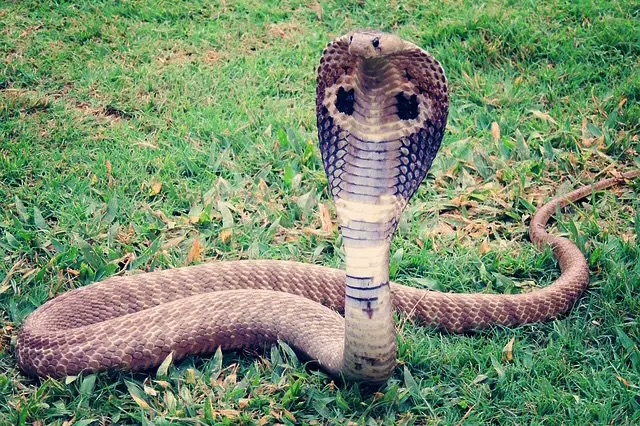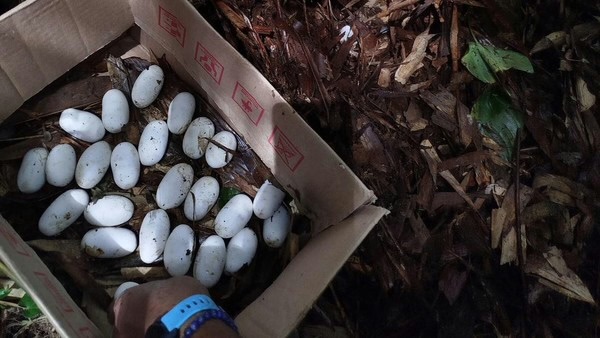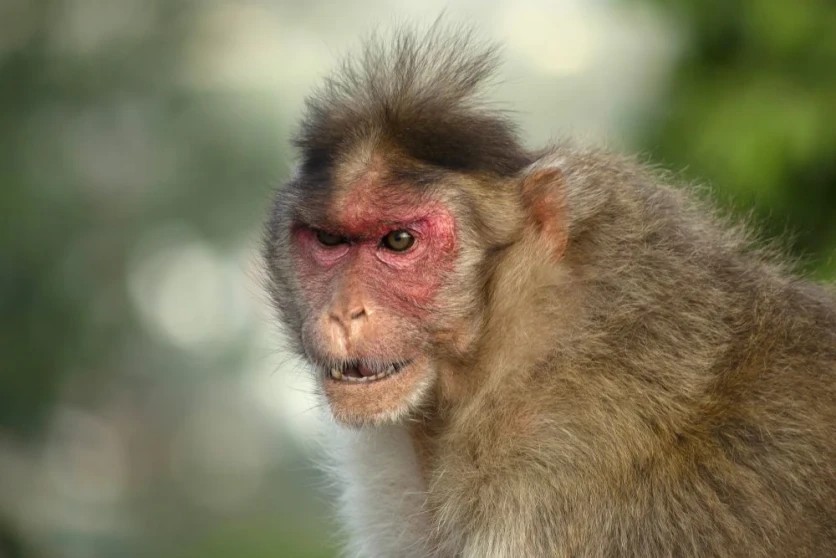In Tabanan and Jembrana, there is an invasion of highly venomous king cobras. In the past 11 days, three adult females have been found, each incubating dozens of eggs. A total of 120 eggs have been seized.

The latest incident occurred on Monday morning in the village of Gadungan (Tabanan), where the Yayasan Reptil Asih Tabanan organization captured a female king cobra. The snake was found in bamboo thickets that locals were gathering for preparation to Galungan.
"Local residents reported encountering the female king cobra. It was 266 centimeters long, with a body circumference of 13 centimeters. It had built a nest in bamboo 91 centimeters long," reported Ni Putu Astrid, chairperson of Yayasan Reptil Asih Tabanan. The cobra was incubating 32 eggs. The snake and clutch were immediately sent to a nursery.

Experts warn that it is currently the king cobra breeding season, and they become especially aggressive in guarding their nests.
"The snake can go three months without eating, only drinking. It only goes out to find food just before the eggs hatch," explained Astrid.
It is estimated that the eggs found will start hatching between December and February, so the likelihood of seeing snakes in the coming months remains quite high.

Astrid explained that the king cobra is known as the only snake capable of making its own nest. It is usually located in a field of bamboo trees near a water channel, with the clutch of eggs located 60-80 centimeters off the ground.
Earlier, in the Marga district (Tabanan), a 3-meter-long cobra was discovered guarding a clutch of 43 eggs.
A day before that, a 2.51-meter-long female guarding 45 eggs was evacuated from Penebel (Tabanan). A video of the capture of this snake went viral on social media.

Experts say the reason for the infestation is a reduction in predators. According to Astrid, the active spread of king cobras in Tabanan and Jembrana is explained by a sharp decline in the number of their natural enemies in the wild. Natural predators of cobras and their eggs include monitor lizards, owls, eagles, wild cats, and hornbill birds.
She added that the reasons for the reduction in predator populations are not only natural changes but also poaching.
The king cobra (Ophiophagus hannah) is the longest venomous snake in the world, capable of growing up to 5.5 meters long. Its scientific name, meaning "snake eater," reflects its unique diet, consisting almost exclusively of other snakes, including venomous ones. It is the only snake species that builds a true nest out of leaves and branches for its clutch, usually consisting of 20–40 eggs.
During the incubation period, which lasts 60 to 90 days, the female aggressively guards the nest, becoming extremely dangerous. When threatened, the cobra strikes a fearsome pose, raising its head high off the ground and spreading its famous hood. The king cobra is considered extremely dangerous not so much due to the toxicity of its venom but because of the sheer volume injected with each bite.
The venom is a potent neurotoxin that can paralyze the nervous system, leading to respiratory and cardiac arrest. Most often, when trying to scare away a person, the snake makes "dry" bites, not injecting any venom at all. This is likely because the cobra needs its venom primarily for hunting, and accidental or unnecessary losses are undesirable.



You can add one right now!